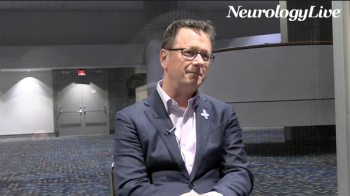
Imbalances in Sex Ratio, Mean Onset of NMOSD Related to AQP4 Positivity and Population Life Expectancy
The analysis revealed a significant link between the proportion of AQP4 antibody-positive cases and a higher female-to-male sex ratio in NMOSD.
A recently published review and meta-analysis showed that both the sex ratio and mean age of onset for aquaporin-4 antibody-associated neuromyelitis optica spectrum disorder (NMOSD) were significantly influenced by the proportion of seropositive cases and population age profile. The analysis, which included nearly 20,000 patients, showed a linear relationship between the sex ratio of NMOSD and the proportion of AQP4 antibody-positive cases (P <.001).1
In the analysis, 528 articles were screened based on title and abstract that reported on epidemiological studies of people with NMOSD assumed to be related to AQP4 antibodies. Of these, 89 were included, comprising 19,415 individuals and from 88 population samples. When grouping whole population studies by geographical region, investigators reported an overall sex ratio of 4.70 (95% CI, 4.33-5.11); however, there was considerable heterogeneity (I2 = 61%).
Senior author Simon A. Broadley, PhD, FRACP, BSc, MBChB, a professor of neurology at the Griffith University in Queensland, Australia, and colleagues found that a higher proportion of AQP4 antibody positive cases were associated with a higher sex ratio (P <.001). When this analysis was restricted to studies with only AQP4 antibody-positive cases, I2 was reduced to 0% indicative of very low residual heterogeneity (P = .53) and ultimately led to a female:male ratio of 8.89 (95% CI, 7.78-10.15). These findings remained similar in a sensitivity analysis that was restricted to studies that used a cell-based assay (sex ratio = 8.87) or the 13 studies that met all Joanna Briggs Institute (JBI) critical appraisal domains (sex ratio = 8.50).
"It is harder to explain the effect of seropositive proportion on the sex ratio, where the sex ratio for false negative cases would be expected to be the same as seropositives. This finding suggests the accidental inclusion of cases with a diagnosis other than AQP4 antibody-associated NMOSD in these cohorts,” Broadley et al wrote.1 "This is likely to be a heterogenous group and might include MS, which has a lower female:male sex ratio (typically 2.73), MOGAD (sex ratio typically 1.00) or other yet-to-be-defined demyelinating disorders, as well as seronegative NMOSD."
For pediatric studies, which included 203 patients, the overall estimate for the sex ratio was 5.68 (95% CI, 4.01-8.03). In late-onset cases (n = 193), the sex ratio was 5.48 (95% CI, 4.10-7.33). Overall, funnel plots did not suggest any significant publication bias and confidence intervals overlapped with those of the whole population studies.
READ MORE:
Mean age of onset and standard deviation data were either available or could be calculated for 54 populations covering a total of 6240 cases. Using meta-regression analysis, data revealed that the mean age of onset was significantly influenced by population life expectancy (P <.001) and proportion of AQP4 antibody positive cases (P = .019), but not geographical region.
Despite a significant degree of heterogeneity (P <.00001), the mean age of NMOSD onset was 38.3 years (95% CI, 35.9-40.8). For comparison, the mean age of onset for countries where the life expectancy for females is 80 or more years was 41.7 (95% CI, 39.1-44.3) and for those where life expectancy is less than 80 years was 33.5 (95% CI, 30.1-36.8), a difference that was statistically significant.
Across 9 studies that provided age of onset data per decade of life (n = 12,599), the commonest age of onset was 40-49 years and the age of onset profile was flatter and broader than that observed in MS. Unlike MS, there were reports of cases that occurred into the eighth and ninth decades. After adjusting age of onset distribution to a flat age structure, the data suggested that the age range 50-59 may represent the period of greatest relative risk of acquiring AQP4 antibody-associated NMOSD.
The study authors concluded, “The fact that studies using less stringent diagnostic criteria (seronegative cases) gave significantly different estimates of both sex ratio and mean age of onset points to phenotypic heterogeneity. We would recommend that future studies of AQP4 antibody-associated NMOSD report only on AQP4 antibody-positive cases or that data for seropositive cases be reported separately."
REFERENCES
1. Arnett S, Chew SH, Leitner U, et al. Sex ratio and age of onset in AQP4 antibody-associated NMOSD: a review and meta-analysis. Journal of Neurol. 2024;271:4794-4812. doi:10.1007/s00415-024-12452-8
Newsletter
Keep your finger on the pulse of neurology—subscribe to NeurologyLive for expert interviews, new data, and breakthrough treatment updates.


































